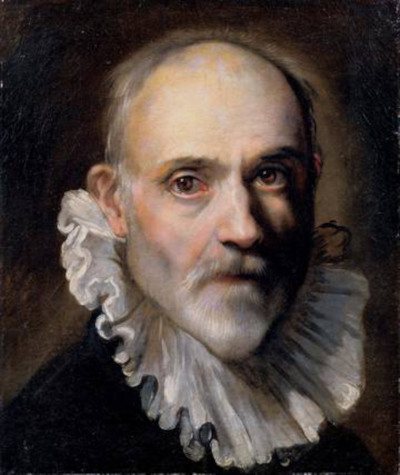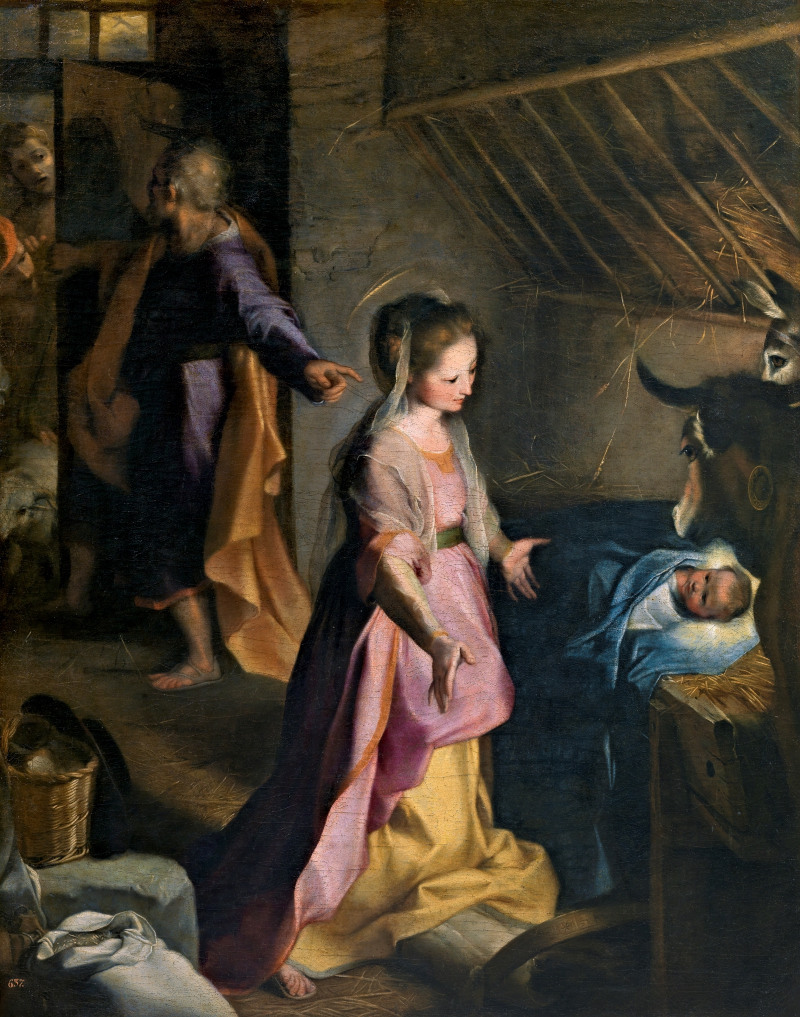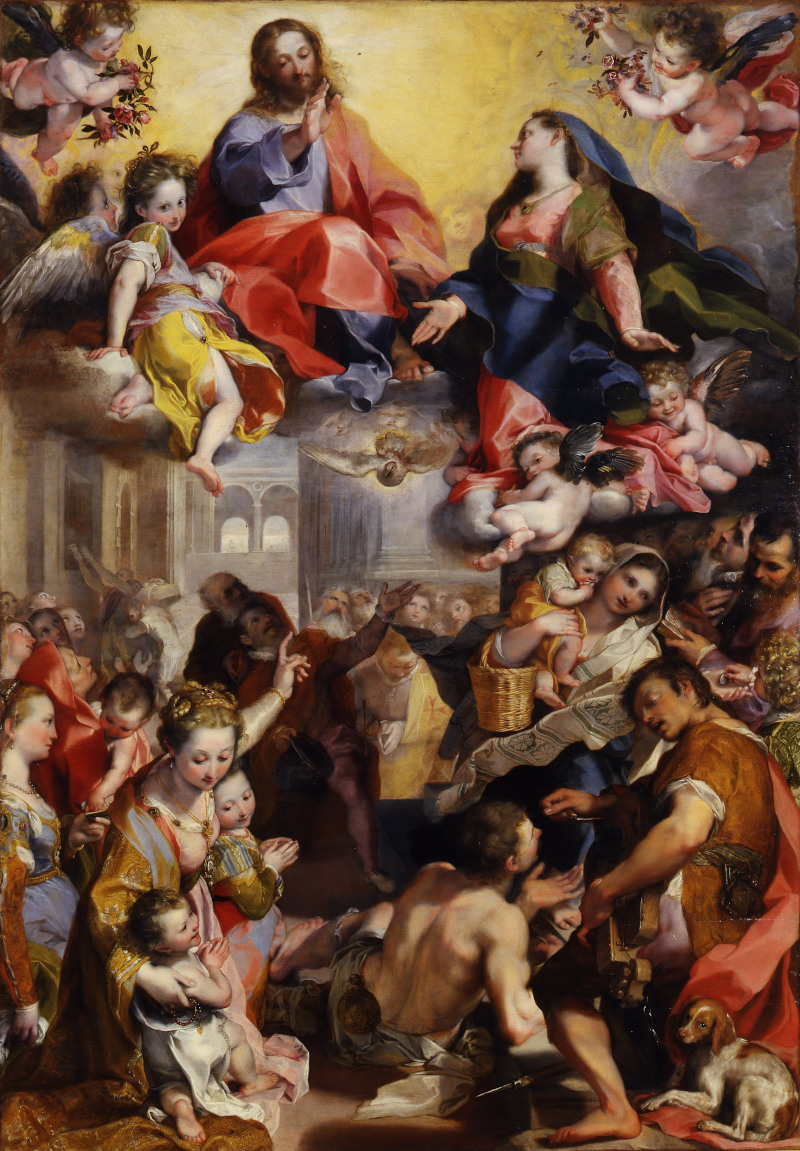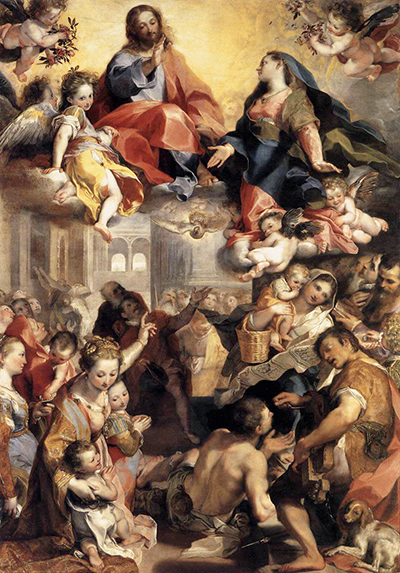Federico Barocci was an Italian Renaissance painter from the late 16th century whose style helped to bring about the Baroque era which followed on shortly afterwards.
Barocci achieved considerable praise from critics, both during his lifetime and in the years that followed. On a scouting mission to Italy, even Rubens was said to have been impressed by a number of his paintings, leading him to make several sketches of them which he could refer to when back in northern Europe.
Whilst the artist was known for the emotions that he delivered in his paintings, many artists who took ideas from his work would focus on specific additions of content found around these complex arrangements, such as the use of certain types of symbolism and unusual choices from real life.
Introduction
Whilst Barocci is classified as a Renaissance or Mannerist painter, partly due to the period in which he worked, most of the hallmarks of his paintings connects directly to the later Baroque era. Indeed, many of the critics who most warmed to his style were actually more connected to that movement. He would use dramatic contrasts of light and highly complex arrangements of figures from relatively early in his career.
Renaissance in Urbino
The artist was born, and passed away, in Urbino, Duchy of Urbino. His earliest works would all be in this city as he set about developing a strong artistic reputation. Later, this would allow him to acquire commissions from other parts of Italy. Urbino was a centre for the arts more generally, with an abundance of literature and visual arts being at the forefront of the Renaissance, best exemplified by the key role of Raphael, who was himself from Urbino.
Barocci may not have had quite the same impact as this great master, but still left an important legacy which helped to smooth and direct the transition from the late Renaissance into all that followed. Urbino also built a number of grand locations solely for the purposes of displaying some of their local artists, helping to promote the city as a centre for culture and expertise.
Federico Barocci Artwork Gallery

Self Portrait

Nativity

Madonna del Popolo
Technique and Materials
Several innovations have been attributed to Barocci, including oil sketches, where oil painters produce simplified versions of a larger piece in order to flush out the main layout and composition. Oil painting was still relatively new at that time, having been imported from northern Europe and eventually replaced the use of egg tempera. The artist is also known to have been one of the very first to produce pastel drawings, a technique which he developed himself and grew to love this new medium.
In terms of his main body of work, Federico Barocci created great energy and emotion within his paintings, and would also incorporate dramatic lighting, in which much of the scene would be drenched in darkness. He loved to create impactful art, and also regularly put together highly complex scenes in which many figures would be carefully intertwined with each other, leaving a true visual feast.
Color
The artist made use of a wide range of colors within his paintings in an attempt to make his work as impactful as possible, whilst also helping to contrast the many different figures and items found in his more complex works. He was also a master of depth and perspective within his scenes, combining color with light and shading to bring a dynamic depth to his paintings. He was also skilled in choosing tones which complemented each other, ensuring that the overall finished artwork worked cohesively.
Major Projects
Madonna del Popolo
Madonna del Popolo is one of Barocci's most famous paintings and was completed in 1579. This artwork used a free expression of brushwork, though the overall composition was carefully planned using a series of drawings, followed by brisk oil studies. The overall work is an extraordinary achievement, featuring a plethora of activity and emotion, running into every corner of this large canvas. It hangs at the Uffizi and captures the essence of this artist perfectly.
 Madonna del Popolo
Madonna del Popolo
Nativity
Nativity came about in 1597 and now resides at the Prado Museum in Madrid, Spain. By this stage, the artist would have been in his early sixties and most of his artistic development would have been complete. The piece is charming, but also uses light in a clever way, leading our eyes towards the key sections of the scene. The figures are also very human in their depiction, helping us to connect directly with the story itself.
 Nativity
Nativity
Perugia Cathedral
The artist completed Deposition for the Perugia Cathedral over the period of 1567–69 and it was to prove an important part of his development, with it being his first project outside Urbino. From this point onwards doors would open in other Italian regions, and his reputation would spread. Within the altar of the Chapel of St Bernardino you will find this impressive piece.
Influence on Baroque Art
Barocci was instrumental in the transition towards Baroque art, and a number of his ideas were taken back to northern Europe by the likes of Peter Paul Rubens who had come across his paintings whilst travelling around Italy. His theatrical compositions, with human-like qualities in his figurative work, as well as the frenzied energy to be found in many of his large scale works can all be considered trademarks of the later Baroque era. He also incorporated strong contrasts of light and luminous colors which immediately distanced him from other members of the late Italian Renaissance.
Conclusion
Federico Barocci remains an important bridge between the Italian Renaissance, Mannerism and the European Baroque era that came about shortly afterwards. He brought energy and emotion into his work, alongside dramatic content and lighting which started this transition, in conjunction with a number of other artists. Another important part of his legacy was in the use of pastel drawing and oil studies, neither of which had not been seen before, but would eventually become key parts of artistic technique.




